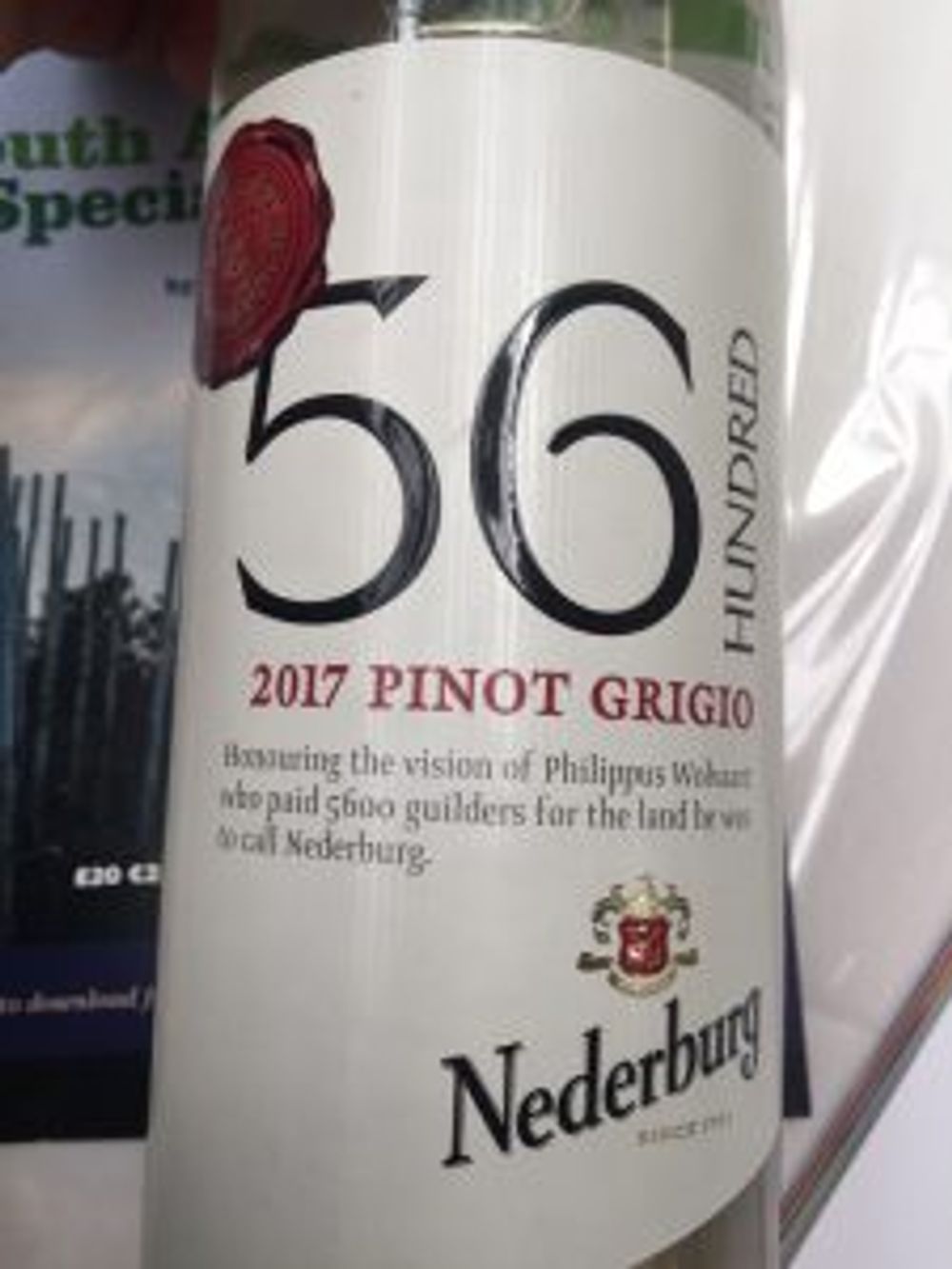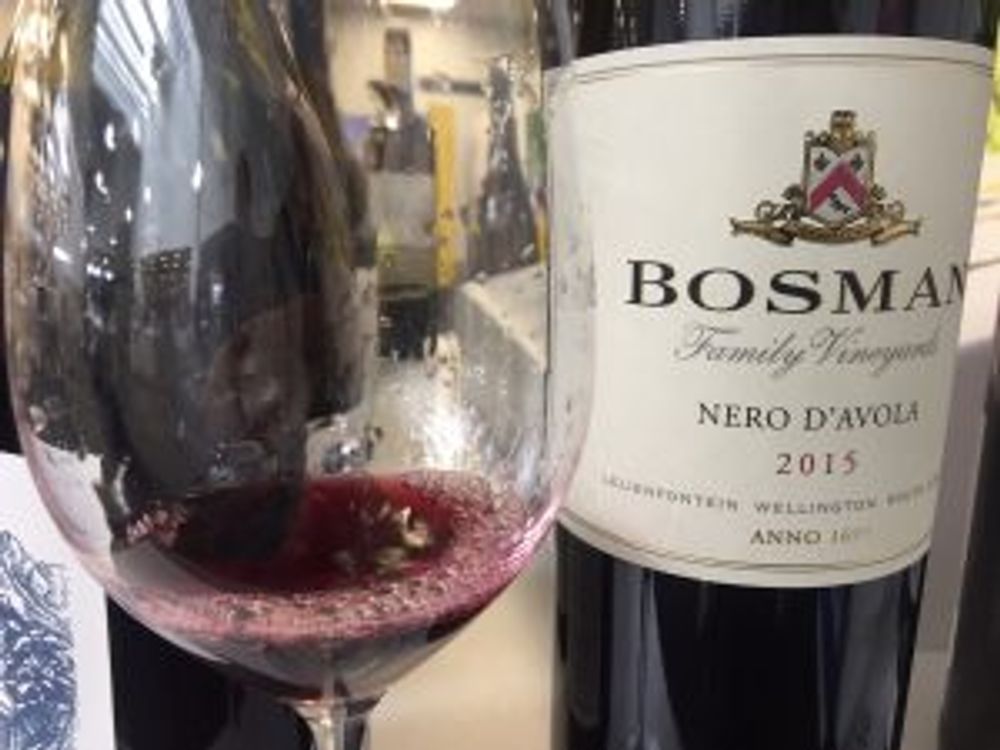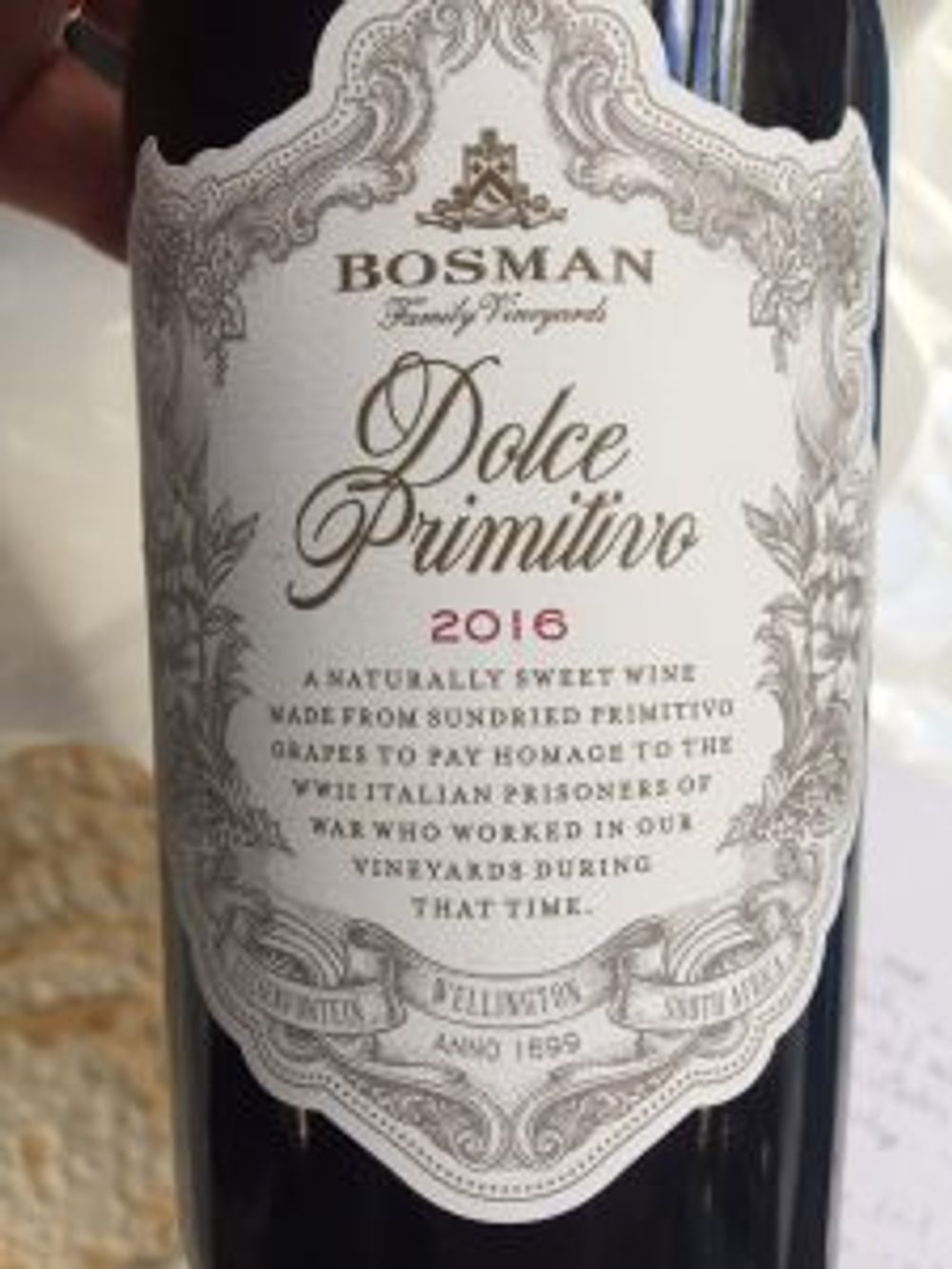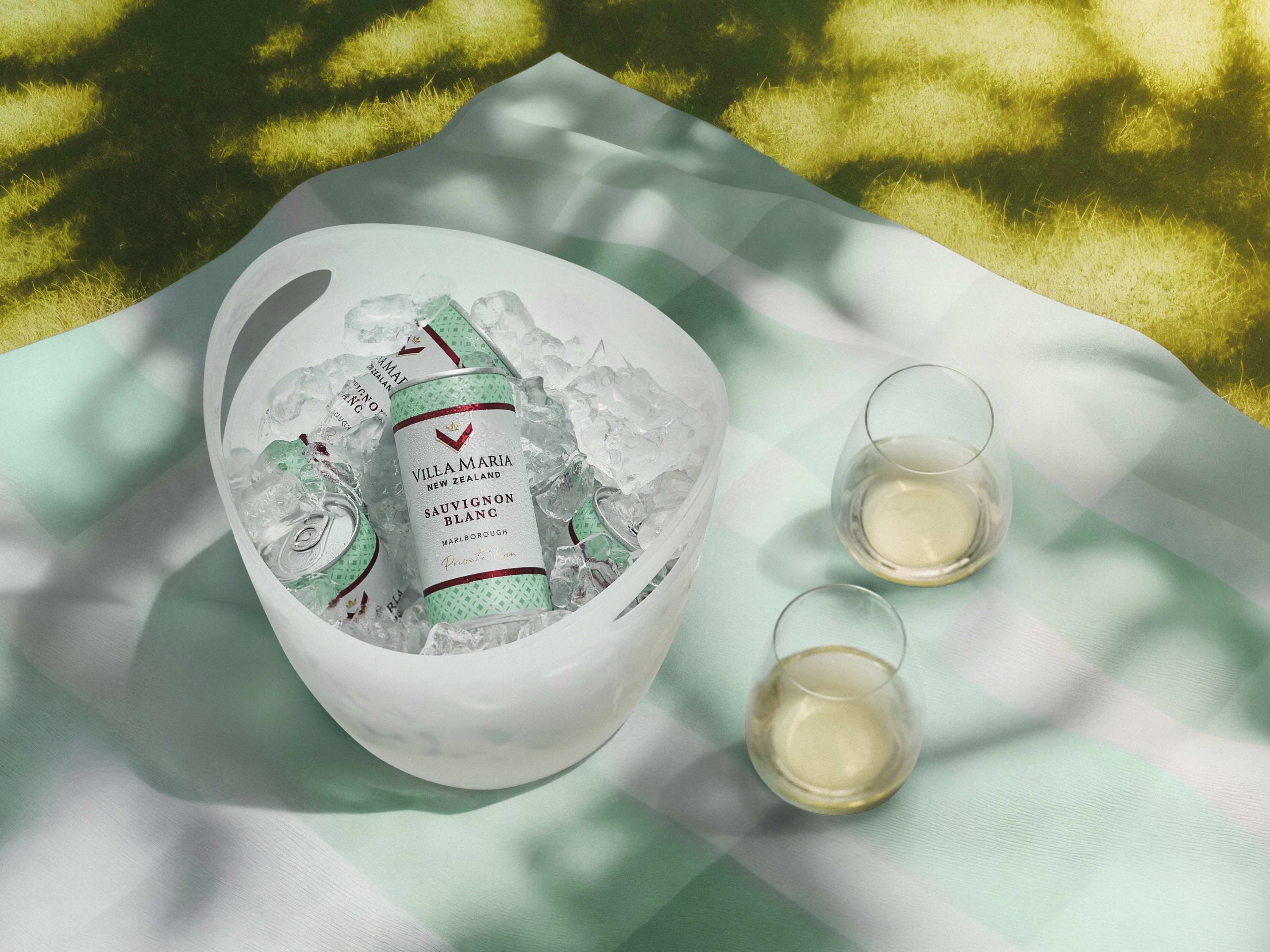So what was the best wine at Intrepid 2017? A textured Chenin Blanc? A smoky Pinotage. Nope, Chris Wilson marked his card at a Barbera from The Drift Farm, a wine that is only made in exceptional circumstances.
Back in January at the Australia Day Tasting one of the key areas of focus was non-traditional Aussie varieties with a heavy leaning on Italian classics, although Assyrtiko snuck in too. There was so much interest in these wines that Wines of Australia followed up the tasting with the Alternative Varieties Tasting in June.
This exercise in highlighting the breadth of the industry, in terms of number of varieties grown rather than output (Italian varieties are responsible for less than 3% of total production in Australia, for example) provided interest for buyers and journalists alike and opened many people’s eyes (and palates) to unusual and untypical grapes and wines.
At this week’s Wines of South Africa’s Intrepid tasting you had to search a little harder to get past the key international varieties and styles that South Africa is famous for, but when you scratched the surface there were a number of interesting and exciting wines on show from varieties you don’t immediately associate with the Cape.
Helpfully the tasting book indexed every wine in the room by variety so it was easy to highlight and sniff out the wines made from these ‘off the beaten track’ varieties. Many were in blends of course, and South Africa is fast becoming the go-to place for red and white blends – there is such a level of skill in the winemaking here that it’s in these blends that real interest and difference can be found.
Leaving the blends aside there were more than a dozen single-variety wines on show from the type of grapes you wouldn’t place in the vineyards of South Africa, notably Nero d’Avola, Barbera and Hárslevelű, and all seemed to have an on-trade bent by virtue of either their rarity or style.
So, with tasting book in hand and taking the ‘Intrepid’ tag of the event at face value, the mission was to find the best single varietal wines in the room made from grapes not usually allied with South Africa. Here’s our pick of the bunch…
Blaauwklippen Vineyard Selection White Zinfandel 2017 (seeking UK distributor)
It looks like a white Zin (rusty hue), it smells like a white Zin (rose, cherry, lychee), but my goodness it tastes nothing like a white Zin. Well, it tastes nothing like the famous Californian style which has been glowing brightly (some might say menacingly) on supermarket and corner shop shelves for the past 15 years.

The first thing that hits you is the lack of sweetness, the second is the clean, lean acidity. This is a dry wine, with a residual sugar of 2.8 g/L, and it’s refreshing and linear and very focussed. The red apple and cherry fruit, lovely texture (it’s had three months lees contact) and classy label all add to the package.
Nederburg 56Hundred Pinot Grigio 2017 (Distell)
Pinot Grigio and Pinot Gris are not as rare in South Africa as some of the wines here, but there were only three listed at the tasting, and one of those was a blend. Of the two single variety options, the 56Hundred Pinot Grigio impressed most.

This pale, almost water-white, wine from the well-known Nederburg stable punches above its entry-level price. The nose is reminiscent of the 80s penny chew Fruit Salad, and there’s fruit on the palate too, red apple and pineapple as well as a hint of green-pepper spice. There’s a lovely acid tang on the long finish making this a versatile and food-friendly option.
Paul Cluver Wines Gewurztraminer 2016 (Seckford Agencies)
As you’d except from a Gewurtz the nose is packed with fruit and jumps from the glass, but this elegant wine from the well-respected Paul Cluver eschews ripe tropical fruits in favour of pear and white nectarine. These notes continue on the palate and are joined by lime, which adds a decent whack of acidity. There’s a waxy Plasticine edge too, which is unexpected but not unkind and kind of rounds the whole thing off nicely.
A full bodied wine with just enough acid to hold it together – more Clare Valley than Colmar.
Lemberg Wine Estate Hárslevelű 2015 (Seckford Agencies)
Hárslevelű is second grape to Furmint in Hungary and often plays a supporting role in the great sweet Tokaji wines. How it came to be planted in the Tulbagh Valley is a bit of a mystery, but thank goodness it did as this wine is a real gem, a departure from the clean, reductive style that many South African whites follow.
The grapes were planted ‘sometime in the 1970s’ and there’s around one hectare of fruit on the Lemberg estate – just 1,000 bottles are produced annually. The wine itself is textured and herbaceous with a sea-spray saltiness, cider apple character and a distinctive oxidative tang. It’s fermented in old, neutral barrels which add to its hefty body and let some of that air in. Popular in the Cape’s fine dining restaurants – which is exactly where Seckford Agencies plan to push it in the UK.
Bosman Nero d’Avola 2015 (Bosman)
As well as making wine, Bosman owns and runs a large vine cuttings nursery in the Cape called Lelienfontein Vine Growers and buys much of its nursey machinery from Italy.

Following numerous trips to Italy (and notably Sicily) over the past 20 years where they saw Mediterranean varieties thriving in hot climates with little water, Bosman decided to plant some Nero d’Avola vines.
Theirs is the first Nero vineyard in South Africa and the 2015 is its second vintage. This is a focused and delicate wine with red cherry fruit, liquorice and black pepper. It’s refined with structured tannins and enjoyable tongue-tingling acidity; refreshing in every sense and quite possibly future-proof too (certainly for the next 20 years).
KWV The Mentors Petit Verdot 2016 (North South Wines)
Still very much seen as part of the winemaker’s blending palette in Bordeaux, Petit Verdot is becoming more common as a single varietal wine elsewhere in the world, notably in Chile, Australia, Virginia and California. There are a fair few in the Cape too, but not too many get listed by UK importers.
This version from one of KWV’s premium ranges certainly takes no prisoners and you can see why Bordeaux winemakers love to add a splash to their wines to enhance colour and tannin in one fell swoop. Bold with a deep purple hue and immediate blackcurrant and damson fruit, it’s a rich and brooding wine that offers some delicious tertiary notes of eucalyptus and pine on the long spirity finish.
The Drift Farm ‘Gift Horse’ Barbera 2015 (Alliance Wine)
“We only bottle this wine in the rare years when it is spectacular. In years when it’s just great, we don’t bother.” That says it all really, and the 2015 is particularly spectacular.

This is smoky and indulgent, you know from first sight that it’s going to be a rich, opulent wine with bags of character… and it doesn’t disappoint. There’s raspberry fruit, some dried herbs and a clean acid backbone that the mellow tannins effortlessly hang off. Too ripe for northern Italy but refined and classy all the same.
Certainly the best label of the day, and quite probably the best wine at Intrepid too.
Bosman Dolce Primitivo 2016 (Bosman)
Wellington is the dried fruit capital of South Africa (quite a title) and as such it’s fitting that the Primitivo for this sweet wine is grown and partially dried here ahead of fermentation. The fruit loses 50% of its weight after stretching out on wooden racks in the late summer sun for a few days post-picking. It’s then briefly stomped on before being transferred to 500L wooden barrels and going through un-inoculated fermentation. The ferment stops naturally at around 12.5% ABV due to the high sugar levels in the wine, leaving a sweet, chewy wine with raspberry and ripe cherry fruit.

This is a new release to the UK and given its placing in South Africa, where it’s currently on the list at Cape Town’s fine dining mecca The Test Kitchen, it’s very much a premium on-trade wine. Beautiful label too.










































